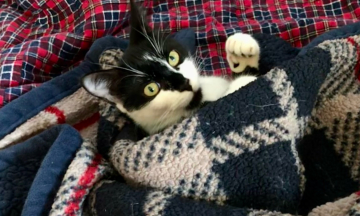July 10, 2025
Who Knew All This About Catnip

Catnip may be best known today for sending cats into a playful frenzy, but its history stretches far beyond the modern pet aisle. For centuries, catnip, officially known as Nepeta cataria, has been used by humans for a variety of purposes, from herbal remedies in ancient Rome to calming teas brewed by early American colonists. As both a medicinal herb and a source of feline fascination, catnip has an intriguing past that spans cultures and continents. This quiz will test your knowledge of the surprising and often overlooked history of this fascinating plant.
1. What is the scientific name for catnip?
A) Mentha piperita
B) Nepeta cataria
C) Salvia officinalis
D) Ocimum basilicum
2. Catnip is a member of which plant family?
A) Rosaceae (rose family)
B) Solanaceae (nightshade family)
C) Lamiaceae (mint family)
D) Fabaceae (pea family)
3. Which ancient civilization is believed to have used catnip for medicinal purposes?
A) Romans
B) Mayans
C) Egyptians
D) Chinese
4. Catnip became popular in Europe during which period?
A) Renaissance
B) Middle Ages
C) Industrial Revolution
D) Enlightenment
5. In traditional European medicine, catnip was commonly used to treat:
A) Joint pain
B) Anxiety and insomnia
C) High blood pressure
D) Tooth decay
6. How did early American colonists use catnip?
A) As an insect repellent
B) To flavor food
C) As a tea for colds and fevers
D) To polish silver
7. Which active compound in catnip causes the famous reaction in cats?
A) Thymol
B) Menthol
C) Linalool
D) Nepetalactone
8. When did scientists first identify nepetalactone as the active compound in catnip?
A) 1700s
B) 1800s
C) 1940s
D) 2000s
9. What percentage of domestic cats are estimated to respond to catnip?
A) 25%
B) 50%
C) 70–80%
D) 100%
10. Aside from cats, which of the following animals may also react to catnip?
A) Dogs
B) Tigers and leopards
C) Rabbits
D) Horses
Answer Key:
B) Nepeta cataria
C) Lamiaceae (mint family)
A) Romans
B) Middle Ages
B) Anxiety and insomnia
C) As a tea for colds and fevers
D) Nepetalactone
C) 1940s
C) 70–80%
B) Tigers and leopards
